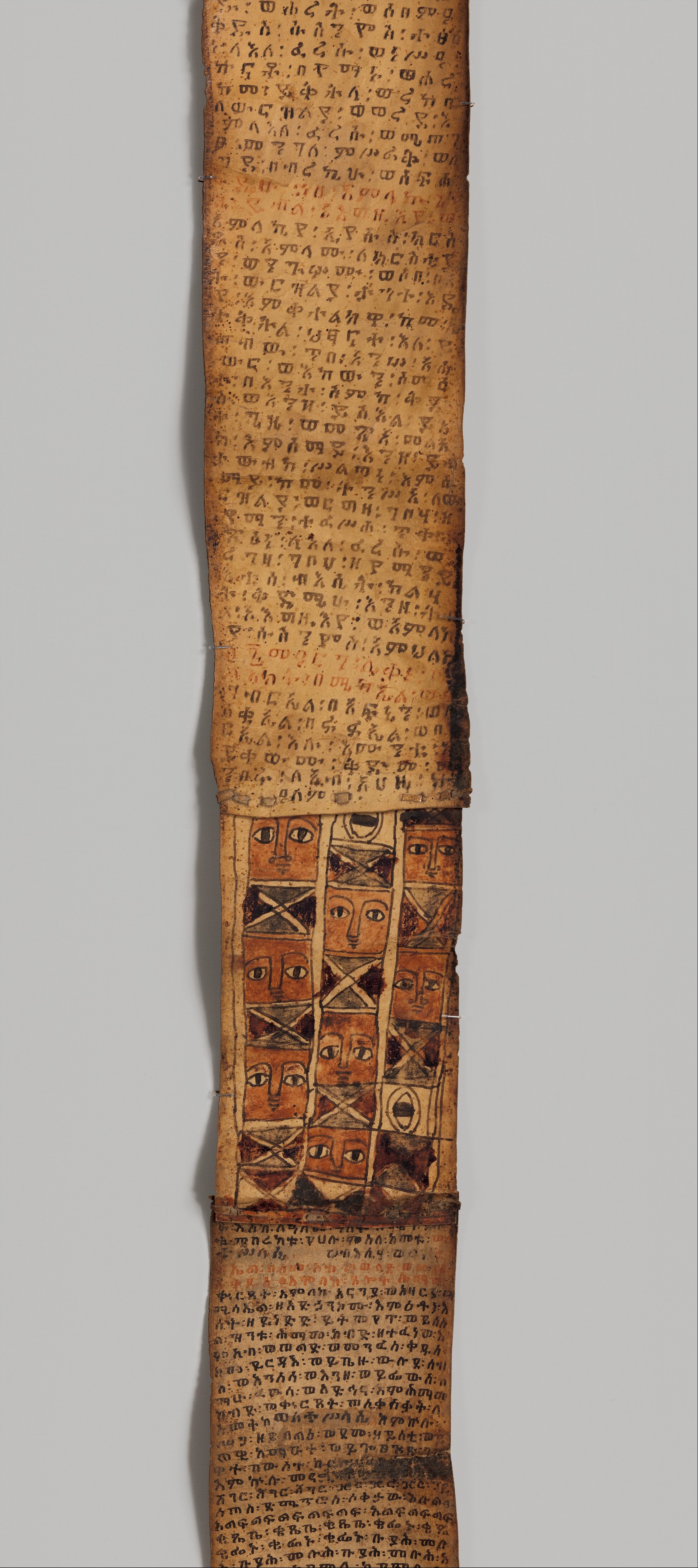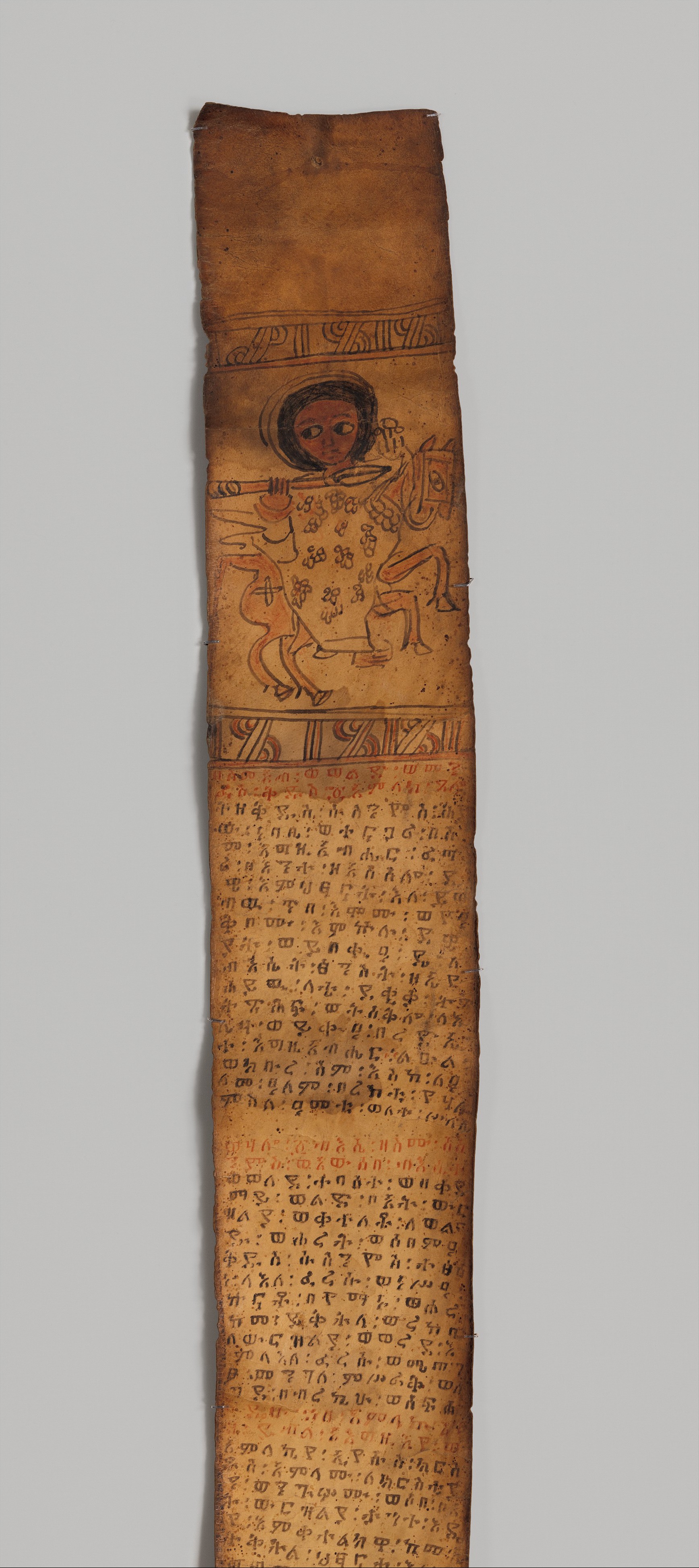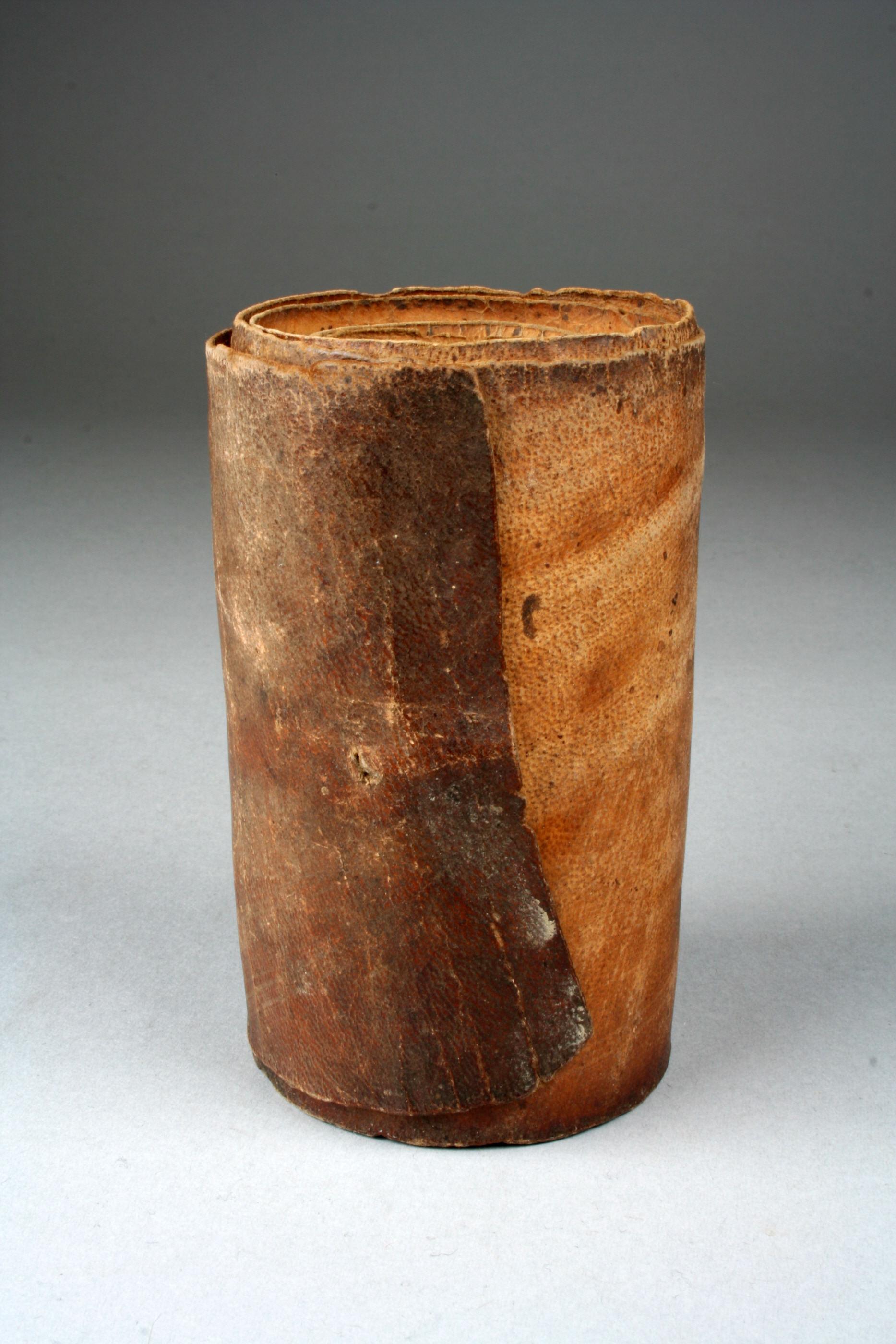Healing Scroll
Ethiopian healing scrolls use written prayers and talismanic imagery to combat demons that cause illness. This scroll was constructed from four pieces of parchment sourced from a ritually sacrificed animal. The preparation and viewing of the scroll are equally vital parts of the healing process. The talismans on this example are rendered in washes of red, black, and green, their sketchy, rounded outlines lending the work an overall linear simplicity. In the uppermost talisman, a youthful, beardless saint rides a rearing horse. His bare toes wrap around an Ethiopian toe stirrup as he points his spear upward in the pose of the victorious knight of Christ. Images of saints were popular in Ethiopian Christian art for their association with spiritual intervention. This example may illustrate Saint Tewodros, who was commonly depicted astride a red horse.
In the central panel, a frontally posed archangel—likely Michael—wears a striped robe and holds a sword aloft in his right hand. According to the Ethiopian Orthodox Church, Michael can force demons to permanently leave their human hosts. A checkerboard motif of alternating faces and geometric patterns forms the final talisman. In combination with prayers, the X-motifs formed by two intersecting white rods aid in the undoing of spells.
Kristen Windmuller-Luna
Due to rights restrictions, this image cannot be enlarged, viewed at full screen, or downloaded.
This artwork is meant to be viewed from right to left. Scroll left to view more.







